Contact for the resource
Bundesanstalt für Geowissenschaften und Rohstoffe
16 record(s)
Provided by
Type of resources
Available actions
Topics
Keywords
Contact for the resource
Service types
-
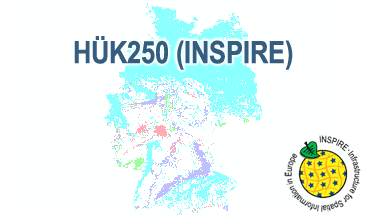
The HÜK250 (INSPIRE) describes the hydrogeological characteristics of the upper continuous aquifers in Germany at a scale of 1:250,000. According to the Data Specification on Geology (D2.8.II.4_v3.0) the map provides INSPIRE-compliant data. The hydrogeologic units are represented graphically – mostly according to the INSPIRE portrayal rules – by GE.Aquifer.MediaType, GE.Aquifer.HydrogeochemicalRockType, GE.Aquifer.permeabilityCoefficient (BGR colours), GE.Aquitard.approximatePermeabilityCoefficient (BGR colours), GE.Aquitard and GE.Aquiclude.ConstitutionOfAquiclude. The geologic units are represented graphically – according to the INSPIRE portrayal rules – by GE.GeologicUnit.AgeOfRocks and GE.GeologicUnit.Lithology. The HÜK250 is a joint project of the SGD under the leadership of the BGR.
-

The HÜK250 (INSPIRE) describes the hydrogeological characteristics of the upper continuous aquifers in Germany at a scale of 1:250,000. According to the Data Specification on Geology (D2.8.II.4_v3.0) the content of the map is stored in a INSPIRE-compliant GML file: HUEK250.gml. The GML file together with a Readme.txt file is provided in ZIP format. The Readme.txt file (German/English) contains detailed information on the GML file content. Data transformation was proceeded by using the INSPIRE Solution Pack for FME according to the INSPIRE requirements.
-
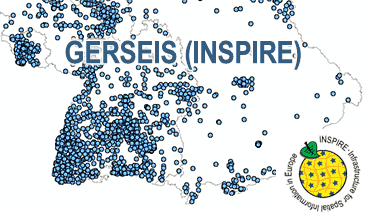
The German Earthquake Catalogue is based on a database providing information on the seismicity in Germany an adjacent areas. It contains locations of seismic events since year 800 where their epicentre determinations are based on historical sources as well as on measurements at seismometer stations since the start of instrumental seismological recording in the 20th century. Today, digital data acquisition at seismometer stations of the German regional seismic network (GRSN), the seismic GERES array, and the Gräfenberg array (GRF) takes place. All events with a local magnitude ML 2.0 and higher are listed. The GML file together with a Readme.txt file are provided in ZIP format (GERSEIS-INSPIRE.zip). The Readme.text file (German/English) contains detailed information on the GML file content. Data transformation was proceeded by using the INSPIRE Solution Pack for FME according to the INSPIRE requirements. Due to the continuous processing of the seismic events, the INSPIRE dataset is updated annually.
-
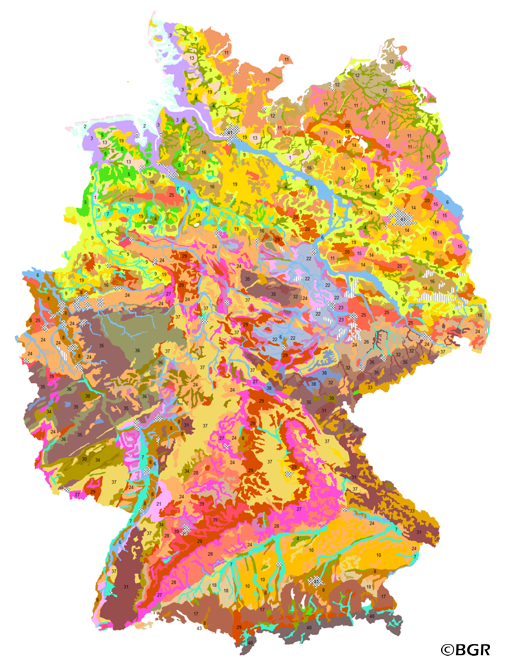
Web Map Service (WMS) of the BUEK3000. The BUEK3000 is prepared by the Federal Institute for Geosciences and Natural Resources (BGR) for the National Atlas of Germany. Based on the generalized and aggregated soil map 1:2,000,000, it shows 43 mapping units with information about soil texture, parent material, dominant and associated soils.
-
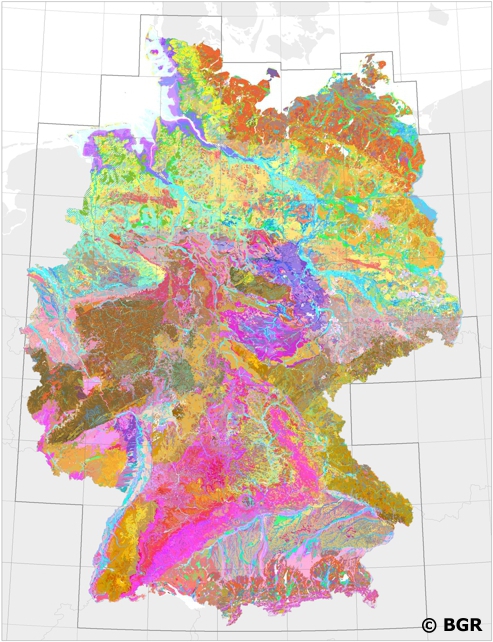
Nation-wide land use strategies and planning as well as soil protection require harmonised and standardised area-covering information. Such data is provided by the digital Soil Map of Germany at scale 1:200,000 (BUEK200). The pedological data of this map, stored in a relational database, is used to demonstrate the abundance and the associations of soils and their basic properties in Germany. However, the main purpose of the BUEK200 is to offer a database which allows the estimation and visualisation of soil functions, soil potentials and soil hazards. To achieve comparable soil information throughout Germany the BGR and the soil surveys of the federal lands have elaborated and defined BUEK200 standards concerning the map (e.g. delineation and description of mapping units) and its database (e.g. database model, parameters, codification).
-
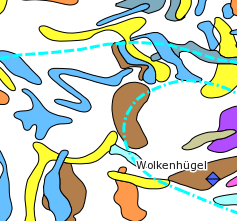
The Map of Mineral Resources of Germany 1: 1,000,000 (BSK1000) provides the basic information on the spatial distribution of energy resources and mineral raw materials (‘stones and earth’, industrial minerals and ores) in Germany. The mineral resources are summarized in commodity groups, represented as different colored units. The map is published by the Federal Institute for Geosciences and Natural Resources in cooperation with the National Geological Surveys.
-
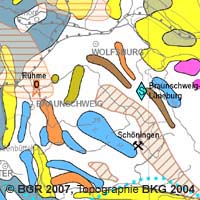
The Map of Mineral Resources of Germany 1: 1,000,000 (BSK1000) provides the basic information on the spatial distribution of energy resources and mineral raw materials (‘stones and earth’, industrial minerals and ores) in Germany. The mineral resources are summarized in commodity groups, represented as different colored units. The back of the map contains information about the definition, creation, important deposits, use and economic significance of all the raw materials shown. The map is published by the Federal Institute for Geosciences and Natural Resources in cooperation with the National Geological Surveys.
-
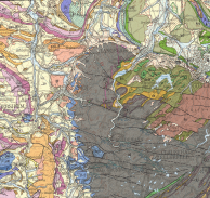
The map series General Geological Map of the Federal Republic of Germany 1:200,000 (GÜK200) is the result of cooperation between the State Geological Surveys of the Federal Republic of Germany (SGD), the Geological Surveys of neighbouring countries and the Federal Institute for Geosciences and Natural Resources (BGR). The GÜK200 displays the surface geology of Germany and adjacent areas of neighbouring countries on 55 map sheets. The map sheets show the regional dissemination of more than 3800 geological units. The geological units contain information on stratigraphy (age), genesis and petrography (composition) of the rocks.
-
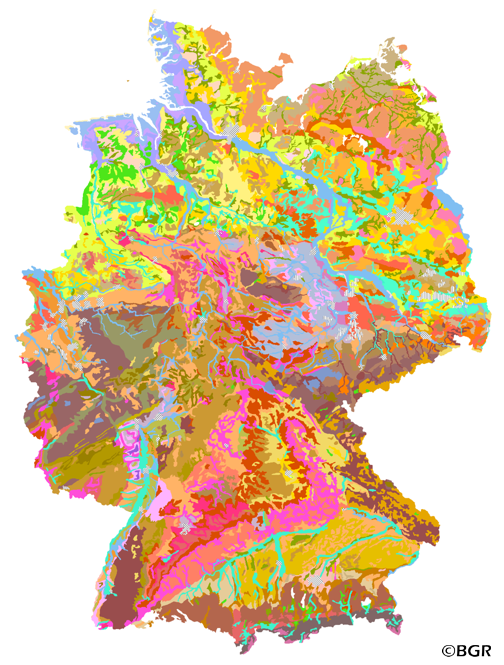
Web Map Service (WMS) of the BUEK2000. The BUEK2000 Version 1.0 was compiled from the BÜK1000 map by a process of generalization. The number of soil mapping units in the legend was reduced from 72 to 60 by aggregation of those units showing similar dominamt soils into single units. The map combined with selected soil profile pictures/graphics and information about soil history, soil classification and soil mapping in Germany is one fundamental part of the Hydrological Atlas of Germany (HAD). The Version 2.0, based on the BUEK2000N, Version 2.3, was cartographically adapted to a new base map.
-

Der WMS GERSEIS (INSPIRE) zeigt die seismologischen Ereignisse, die im Deutschen Erdbebenkatalog der BGR fortlaufend gespeichert werden. Dieser Katalog liefert Informationen zum seismischen Geschehen in Deutschland und benachbarten Gebieten. Er beinhaltet die Orte, an denen seit dem Jahr 800 seismische Ereignisse stattfanden. Grundlage für die Epizentrumsbestimmung sind historische Quellen sowie seit Beginn der instrumentellen Erdbebenaufzeichnung im 20. Jahrhundert Messungen mit Seismometerstationen. Die digitale Datenerfassung findet an den Seismometerstationen des Deutschen Regionalnetzes (GRSN) sowie den Messanlagen des GERES-Arrays und des Gräfenberg-Arrays (GRF) statt. Es werden alle Ereignisse mit einer lokalen Magnitude ML 2,0 oder aufgelistet. Aufgrund der kontinuierlichen Erfassung der seismischen Ereignisse wird der INSPIRE-Datensatz in jährlichem Abstand aktualisiert. Der WMS GERSEIS (INSPIRE) beinhaltet ein Layer mit den seismologischen Ereignissen (NZ.ObservedEvent), die gemäß der INSPIRE-Darstellungsregeln abgebildet sind. Mit Hilfe der getFeatureInfo-Anfrage erhält der User die Inhalte der INSPIRE-Attribute unitsOfMeasure, qualitativeValue, quantitativeValue, validFrom, intensityScale (Kurzname der Intensitätsskala aus dem Attribut citation). The WMS GERSEIS (INSPIRE) represents the seismological events of the German Earthquake Catalogue which is based on a database providing information on the seismicity in Germany and adjacent areas. It contains locations of seismic events since year 800 where their epicentre determinations are based on historical sources as well as on measurements at seismometer stations since the start of instrumental seismological recording in the 20th century. Today, digital data acquisition at seismometer stations of the German regional seismic network (GRSN), the seismic GERES array, and the Gräfenberg array (GRF) takes place. All events with a local magnitude ML 2.0 and higher are listed. Due to the continuous processing of the seismic events, the INSPIRE dataset is updated annually. The WMS GERSEIS (INSPIRE) contains a layer of the seismological events (NZ.ObservedEvent) displayed correspondingly to the INSPIRE portrayal rules. Via the getFeatureInfo request the user obtains the content of the INSPIRE attributes unitsOfMeasure, qualitativeValue, quantitativeValue, validFrom and intensityScale (short name of citation of the intensity scale).
 INSPIRE-1
INSPIRE-1